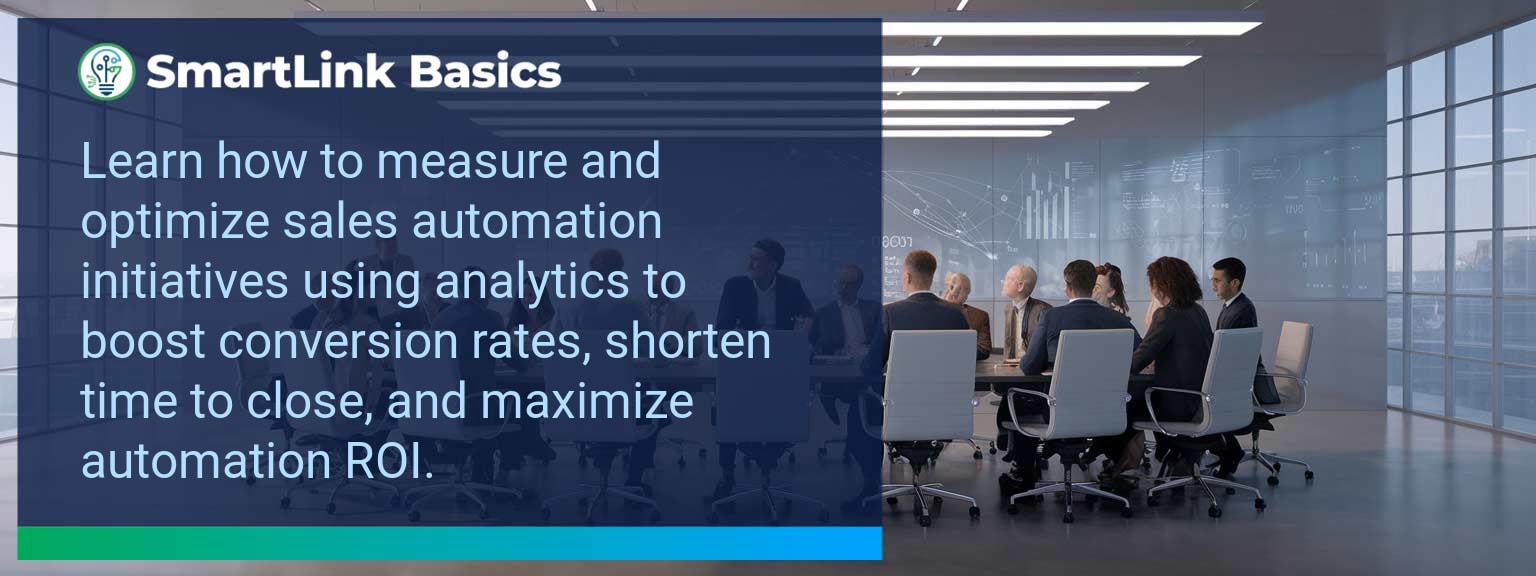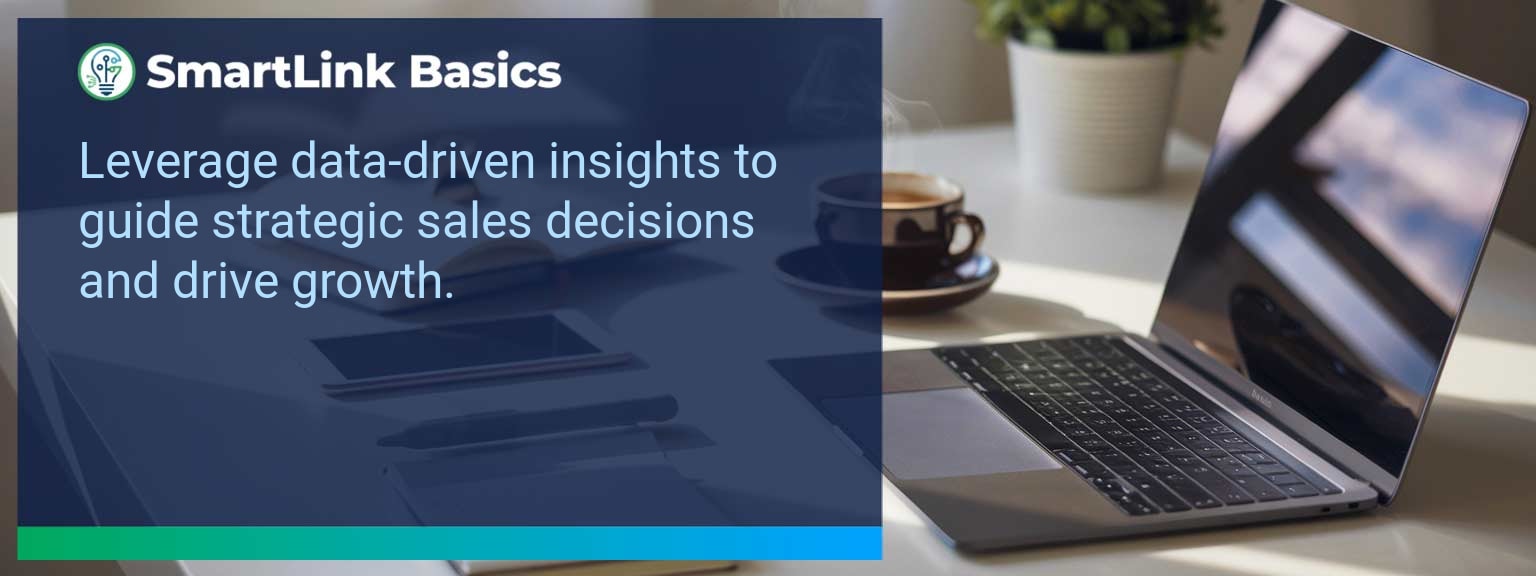Industry data shows that organizations adopting AI-driven automation achieve cost reductions of up to 30% while accelerating sales cycles by 20% or more (McKinsey, 2024). For sales leaders, AI automated workflows now define competitive advantage, enabling teams to reallocate time from repetitive tasks to high-value engagements. At SmartLink Basics, we help decision-makers implement these systems strategically, ensuring they integrate with existing revenue operations. In this article, you’ll see how AI automated workflows power business outcomes, the common obstacles that slow adoption, and practical steps to optimize processes. You’ll walk away with proven examples, a 90-day action blueprint, and measurable KPIs to track results.
- Automate repetitive administrative and CRM updates with AI.
- Integrate machine learning to personalize outreach at scale.
- Streamline approvals, quotes, and contract workflows for speed.
- Use predictive analytics to prioritize sales opportunities.
- Track adoption and performance with targeted metrics.
AI Automated Workflows: What Changed and Why It Matters
AI adoption has shifted from experimental to operational, making automated workflows a standard in high-performing sales organizations. The real advantage lies in combining workflow automation with artificial intelligence workflows to optimize every step of the revenue process. Sales leaders now use AI to synchronize touchpoints, reduce manual inputs, and ensure faster execution. For example, a B2B SaaS leader introduced automated lead enrichment and routing, cutting qualification time by 60%. Actionable insight: Audit processes for time-intensive handoffs and apply AI where repeatability is high.Redesign the Revenue Operating System With AI Automated Workflows
ICP, Segmentation, and Targeting AI-enabled segmentation uses historical wins, firmographic, and behavioral data to dynamically update ICP profiles. This ensures targeting precision without quarterly re-work. Pipeline Architecture Automated workflows push opportunities through the right stages based on engagement signals. AI flags at-risk deals for intervention. Plays and Messaging Integrated automation tools deliver personalized sequences based on buyer activity, increasing relevance at every touchpoint. Operating Cadence AI schedules follow-ups, forecast calls, and account reviews based on actual pipeline movement rather than static calendars. Actionable insight: Implement automation that adapts in real-time to both internal and buyer-driven events.Common Obstacles To Achieving Seamless Automation
The most frequent challenges are fragmented systems, inconsistent data quality, and cultural resistance. Without a unified data layer, automation amplifies errors rather than solving them. Coca-Cola Europacific Partners reported needing a full data governance upgrade before AI could improve sales workflows. Leaders must first assess infrastructure readiness and train teams to trust AI-influenced recommendations. Actionable insight: Before deployment, establish clean data practices and a single source of truth.Implementing AI To Optimize Workflows
Effective deployment of AI process optimization starts with mapping current-state processes, identifying friction points, and matching them with automation tools. For example, automating proposal generation based on CRM opportunity data can reduce turnaround from three days to one hour. Solutions combining business process automation platforms with machine learning integration enable continuous performance improvement. Actionable insight: Pilot in one high-impact stage, measure, and then expand.Tangible Benefits From Automated Processes
The benefits extend beyond time savings — sales leaders gain a scalable system. Tangible outcomes include faster quote-to-close, higher lead conversion, and better forecast accuracy. A manufacturing firm implemented AI-assisted order processing and cut errors by 40%, improving on-time delivery rates. Actionable insight: Track both speed and accuracy to measure workflow automation effectiveness.Metrics That Matter
| Category | Metric | Definition | Target |
|---|---|---|---|
| Leading | Workflow Completion Rate | % of automated sequences executed without manual intervention | 95%+ |
| Leading | AI Suggestion Adoption Rate | % of AI-generated action recommendations executed by reps | 80%+ |
| Lagging | Cycle Time Reduction | Decrease in time from lead entry to closed-won | 20%+ |
| Lagging | Revenue Per Rep | Average sales revenue generated per sales rep per quarter | +15% YoY |
| Quality | Automation Error Rate | % of workflows that trigger incorrect outcomes | <1% |
| Quality | Customer Satisfaction Post-Automation | Average CSAT score after automation implementation | ≥ 4.5/5 |
Innovations And Next Steps For AI Automation
Emerging capabilities like AI-generated playbooks, intent-driven dynamic routing, and integrated AR for virtual product demos are shaping the next wave of sales automation. Companies integrating these tools early will outpace competitors in speed and personalization. Actionable insight: Stay ahead by testing emerging automation features quarterly and aligning them with evolving buyer expectations.Get the 90-day plan, coaching rubric, and dashboard template to operationalize AI in your enablement program.
Turning AI Automation Into a Revenue Multiplier
AI automated workflows are now a strategic lever for predictable, scalable growth. This guide outlined current applications, adoption challenges, a 90-day execution plan, and measurable success criteria. To make automation pay off, sales leaders should integrate tools into one cohesive operating system and review results monthly for continuous improvement. Access more AI-driven sales enablement resources from SmartLink Basics to design a high-performance automation strategy. Effective sales leadership directly influences revenue by shaping how teams operate, communicate, and adapt. Research from CSO Insights shows organizations with strong sales leadership achieve win rates over 15% higher than the average. At SmartLink Basics, we see that sales leadership strategies work best when they combine clear expectations, targeted coaching, and data-driven decision-making. This article outlines specific methods to strengthen sales team management, elevate sales performance improvement, and utilize sales coaching techniques so leaders can drive more consistent deal closures with confidence.- Clarify team goals with measurable sales targets
- Use structured performance feedback to guide improvement
- Develop repeatable coaching frameworks for skill growth
- Measure leading and lagging sales performance metrics
- Continuously refine strategies based on data and results
Overcoming Obstacles In Team Performance And Communication
Underperforming sales teams often struggle with misaligned goals, inconsistent processes, and unclear role expectations. A lack of direct leadership communication can result in low team motivation and missed sales targets. These gaps hinder performance feedback loops and slow deal velocity. For example, a mid-market SaaS company saw quarterly revenue drop 8% due to siloed account management practices. By standardizing meeting structures and implementing weekly progress reviews, they restored collaboration and improved quota attainment by the next quarter. Sales leaders should audit their team’s communication cadence, review sales coaching techniques applied by managers, and align on a shared sales performance improvement plan.Implementing Proven Leadership Strategies For Sales Growth
Strong sales leadership strategies transform tactical execution into predictable growth. This involves refining sales team management approaches, upgrading pipeline architecture, and embedding high-quality coaching methods into the workflow. One approach is to introduce role-specific enablement sessions where reps receive focused skill development tied to current opportunities. For example, a B2B services firm that implemented monthly pitch refinement sessions saw a 12% improvement in close rates within a quarter. Leaders should ensure they have consistent operating cadences, data-backed account prioritization, and clear responsibility for each stage in the sales process.Measuring Positive Impacts On Team Dynamics And Sales
Measurement must extend beyond revenue to include indicators of team health, skill application, and process adoption. Sales leaders who track both leading and lagging metrics can identify potential challenges before they impact results. The table below shows a balanced set of metrics that capture sales success from multiple angles.| Category | Metric | Definition | Target |
|---|---|---|---|
| Leading | Qualified Meetings Booked | Number of sales-ready meetings scheduled | +15% QoQ |
| Lagging | Closed Won Revenue | Total revenue from deals marked as closed won | 110% of quarterly quota |
| Quality | Coachability Index | Manager rating of rep’s adoption of coached skills | 8/10 or higher |
Preparing For The Next Stage Of Team Development
Once core sales processes are stable and producing consistent results, leaders should expand development efforts to include team motivation programs, advanced skills training, and cross-functional collaboration strategies. A retail brand that shifted from reactive performance reviews to quarterly development plans saw improved retention and a 9% increase in year-over-year sales per rep. Continued sales performance improvement requires leadership to anticipate market changes, adopt adaptable sales coaching techniques, and create a structured path for career growth within the sales organization.Get the 90-day plan, coaching rubric, and dashboard template to operationalize AI in your enablement program.









